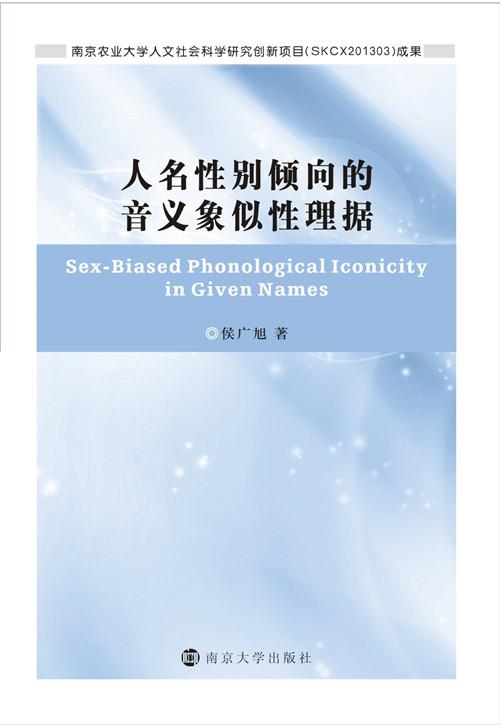目录 (Table of Contents)
摘要
Abstract
第一章 引言(Introduction)
第二章 男女魅力二元分布的生物学基础(Biological Basis for Dimorphism of Man and Woman’s Attractiveness)
2.1 男女的一般生物学差异(General Biological Differences between Man and Woman)
2.2 男女魅力的体型二态现象(Size Dimorphism of Man and Woman’s Attractiveness)
2.2.1 腰臀比与男女魅力(WHR and Man and Woman’s Attractiveness)
2.2.2 其它体型特征与男女魅力(Other Body Shape Features and Man and Woman’s Attractiveness)
2.3 男女发音的生理区别(Physiological Differences of Man and Woman’s Pronunciation)
第三章 音义象似性(Phonological Iconicity)
3.1音义象似性研究回顾(Review of Previous Researches on Phonological Iconicity)
3.1.1 引言 (Introduction)
3.1.2 音义象似性的语言文字学与语言学视角的研究 (Phonological Iconicity Research from the Perspective of Philology and General Linguistics)
3.1.3 音义象似性的心理学视角的实证研究(Empirical Phonological Iconicity Researches from the Perspective of Psychology)
3.1.4 音义象似性的心理学、认知语言学与神经语言学视角的原理研究(Phonological Iconicity Mechanism Research Based on Psychology,Neuro-linguistics and Cognitive Linguistics)
3.1.5 小结(Summary)
3.2 语言象似性原则在音义象似性上的体现(General Iconicity Principles as Manifested in Phonological Iconicity)
3.2.1音义的数量象似性 (Quantity Phonological Iconicity)
3.2.2音义的空间象似性(Spatial Phonological Iconicity)
3.2.3 音义的顺序象似性(Linear/Sequential Phonological Iconicity)
3.2.4 音义的模态象似性(Mimetic/Imagic Phonological Iconicity)
3.2.4.1 摹声(Onomatopeia)
3.2.4.2 模态(Imitation)
3.2.5 认知象似性(Cognitive Iconicity)
3.2.5.1 音丛类比象似性(Clustering Phonological Iconicity)
3.2.5.2 音义的标记象似性(Markedness Phonological Iconicity)
3.2.5.3 音义的交际象似性(Communicative Phonological Iconicity)
3.2.5.4 音义的认知经济性(Cognitive Phonological Economy)
3.3 语义场理论与音义象似性(Semantic Field Theory and Phonological Iconicity)
3.3.1同一语义场中非反向反义关系单纯词的音义象似性(Phonological Iconicity among Non-Opposite Words within the Same Semantic Field)
3.3.2同一语义场中反义反向关系单纯词的音义象似性(Phonological Iconicity among Opposite Words within the Same Semantic Field)
3.4 音义象似性学说的缺陷(Limitation of Phonetic Iconcity)
3. 4. 1 语言象似性的例外性(Exceptions of Phonological Iconicity)
3. 4. 2 语言音义、形义、语法等象似性的“不完美性”是语言生命力的特质(Exceptions Prove the Rule and Deviations Facilitate Linguistic Vitality)
3. 4. 2. 1 语用对语言象似性的干扰(Pragmatic Interference of Linguistic Iconicity)
3. 4. 2. 1 认知对语言象似性及规则性的干扰(Pragmatic Interference of Linguistic Iconicity)
3.5 音义象似性在人类语言乃至人类文明起源与进化中的作用(Role of Phonological Iconicity in the Origin and Evolution of Human Languages and Civilization)
3.5.1 音义象似性研究是破解人类语言起源与进化奥秘的突破口(Iconicity Provides the Key to Understanding the Origin of Human Language)
3.5.2 从音义象似性到形义、语法象似性的升级推进人类语言的进化---模因论的视角(Phonological, Scriptural and grammatical iconicity Enhances the Evolution of human languages: a Memetic Perspective)
3.5.3 语言象似性对西方文明的推进(Role of Linguistic Iconicity in the Evolution of the Western Civilization)
第四章 以往人名语音性别提示与人名性别偏向的音义象似性研究(Previous Researches on Phonological Cues to and Phonological Symbolism in Gender in First Names)
4.1 人名的性别提示的一般研究(General Researches on Cues to Gender in First Names)
4.2 人名性别的语音学提示研究(Phonological Cues to Gender in First Names)
4.3 人名性别倾向的音义象似性研究(Sex-biased Sound Symbolism in First Names)
4.4 动物名性别倾向的音义象似性(Sex-biased Sound Symbolism in Animal Names)
4.5 结语(Conclusion)
第五章 研究问题、研究材料与方法与研究结果(Research Questions, Materials, Methods and Results)
5.1 研究问题(Research Question)
5.2 研究材料(Research Materials)
5.3 研究方法 (Research Method)
第六章 研究结果、结果分析与讨论 (Research Result, Analysis and Discussion)
6.1 研究结果 (Research Result)
6. 1. 1 127个国家与地区的男女常用名整体语音性别倾向的统计结果(Statistical Results on Sex-biased Phonological Iconicity in All Common First Names of 127 Countries, Regions and Communities)
6. 1. 2 127个国家与地区的男女独立常用名语音性别倾向的统计结果(Statistical Results on Sex-biased Phonological Iconicity in Unique Common First Names of 127 Countries, Regions and Communities)
6.2 结果分析与讨论 (Analysis and Discussion)
6.2.1 引言(Introduction)
6.2.3 规则性研究结果的讨论(Discussion on Regular Results)
6.2.4 非规则性研究结果的讨论(Discussion on Irregular Results)
6.2.5 人名性别倾向的音义象似性的总体理据驱动(Sex-biased Phonological Iconicity in Given Names: General Motivation)
第七章 结语 (Summary)
7.1结论(Conclusion)
7.2 本研究的局限性(Limitations of the Research)
7. 2. 1 研究材料的局限性(Data Limitations)
7. 2. 2 人名的语言与民族性差异干扰(Interference of Linguistic and Ethnic Diversity)
7. 2. 3 男女生物学魅力的民族多样性干扰(Interference of Ethnic Diversity of Man and Woman’s Physical Attractiveness)
7. 2. 4 研究者的自身局限性(Limitations of Researcher)
7.3 对未来研究的建议--人名性别倾向音义象似性研究对相关应用性研究与语言研究方法的启示 (Suggestions for Future Research: Practical Implications of the Present Research on the Related Applied Research and the Linguistic Research Methodology)
7.3.1 人名性别倾向音义象似性研究对相关应用性研究的启示(Implications on the Related Applied Research and the Linguistic Research Methodology)
7.3.2 人名性别倾向音义象似性研究对语言研究方法的启示(Implications on the Linguistic Research Methodology)
7.4 人名性别倾向的音义象似性探索在语言、文化、哲学层面的研究意义(Cultural and Philosophical Implications of the Present Research)
参考书目 (References)
索引 (Index)
后记 (Epilogue)
附录I 127个国家与地区的前十个常用女名(List of Top Ten Popular Female Given Names of 127 Countries, Regions or Communities)
附录II 127个国家与地区的前十个常用女名( List of Top Ten Popular Female Given Names of 127 Countries, Regions or Communities)
附表III 127个国家与地区的独立男名(Unique Male Given Names of 127 Countries, Regions or Communities)
附表IV 127个国家与地区的独立女名(Unique Female Given Names of 127 Countries, Regions or Communities)

